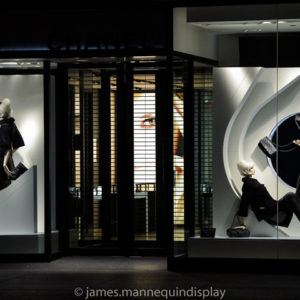


Tokujin Yoshioka has worked with Issey Miyake on numerous projects over the past 28 years, developing exhibition displays and store interiors for the famed fashion designer across the globe — from Paris to New York. Their collaboration continues to grow for the ‘Miyake Issey exhibition: The work of Miyake Issey’ at the National Art Center, Tokyo. The show sheds light on Miyake’s ideas about making things, and his approach to design — spanning from his earliest works to his latest projects — and to showcase his creations, Yoshioka has envisioned two mannequin typologies to display Miyake’s clothing which stem from the idea of ‘A piece of cloth’ being transformed into a beautiful shape that is worn on the human body.

Considered ‘Grid bodies’, or the ‘Transparent body installation’ Yoshioka has specially conceived these figures to highlight Issey Miyake’s garments. In room A, one finds the 1970s collections of Miyake dressing figures composed out of 365 laser cut cardboard parts, arranged as a grid structure to create a futuristic human body. They are adorned by pieces that investigate Miyake’s constant innovation in fabric-making, and his deep respect for tradition.

Some of the clothing found in this space include a jumpsuit with a tattoo motif that literally looks like a wearable second skin, a multi-size handkerchief dress made out of just three squares of fabric joined on the bias, a cocoon coat swept diagonally around the body, and a linen jumpsuit cut from an entire width of fabric. These free-form shapes take on different meanings on different bodies, thus making the wearer more important than the actual clothes.
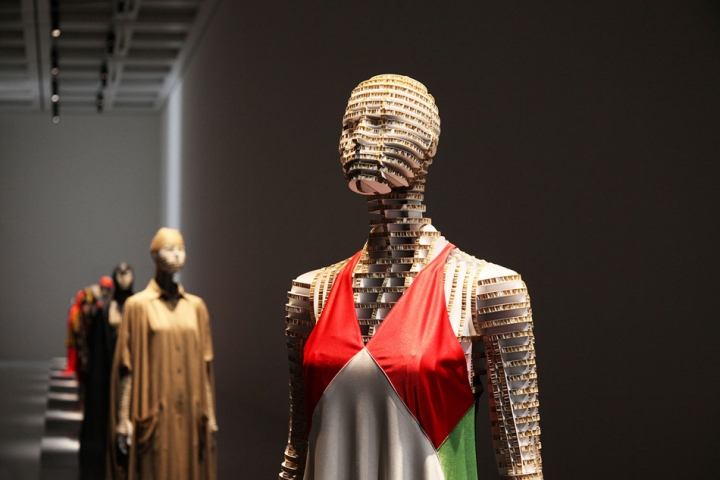
In room B, the human body, intended as a presence to enhance, streamline and redesign, is central in the work of Issey Miyake, particularly in the eighties as Miyake was reacting with his personal tools and views, to the zeitgeist of a lively contradictory and eminently hedonistic decade. It was then that he actually anticipated a whole movement, proposing his first body-centered creations.

All of these concepts are found in room B, creating a counterpoint and a suspension to the rest of Miyake’s ouevre. So to compliment these garments, Yoshioka designed mannequins which symbolize the future. Made from transparent acrylic resin, they speak of this phase of Miyake’s work which carried on the most technological and formal research from which his design practice has been established.

The stress on the body is in fact made possible by the application of new technologies that allow the use of materials that had previously never been applied to clothes-making. Modeled on a real torso, these items were not intended as a work of art, but as industrially produced multiples. Here the silicon zippered body follows the same principle, while the rattan pieces, halfway between clothing and undergarment, stand at the crossing of east and west. The waterfall body pieces, made of pewlon and modeled on the torso with the aid of a silicon infusion seamlessly mix classic draping, sculpture and science, using a piece of cloth.

Just like in previous exhibition collaborations, Tokujin Yoshioka hopes that the transparent body installation brings forth a new perspective to the work of Issey Miyake, and while acting as sculptural works within the gallery space, let the clothes do all of the talking.








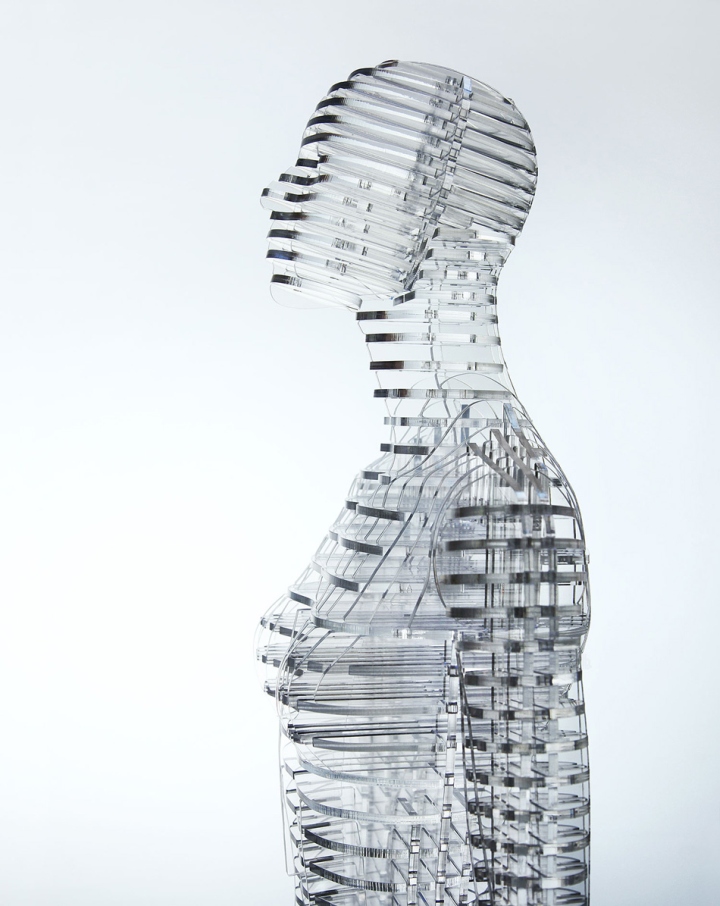



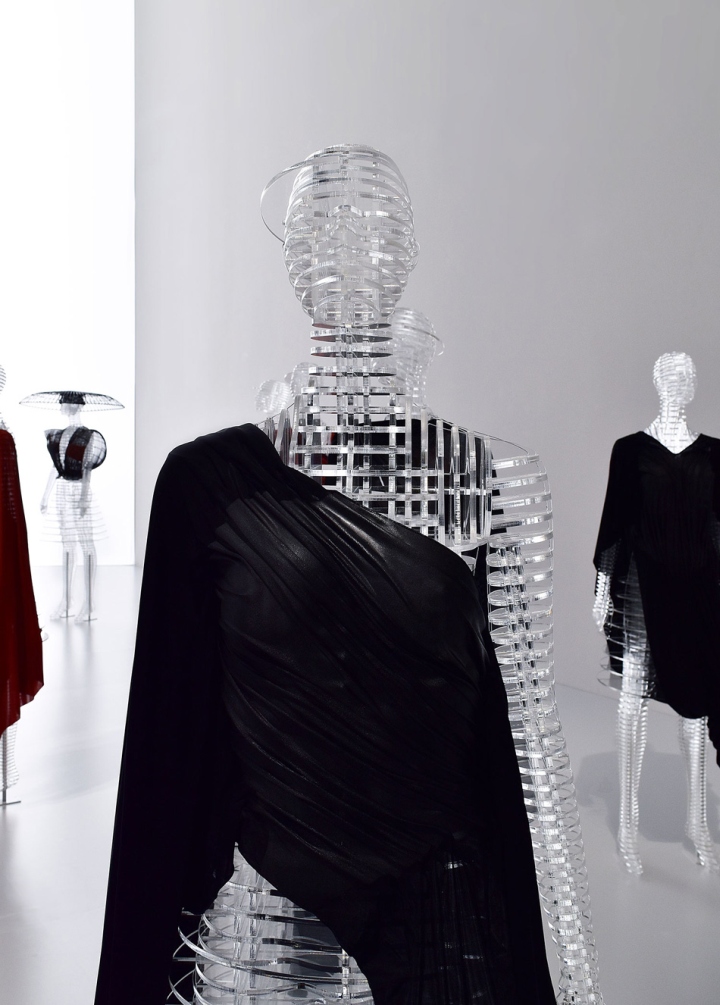





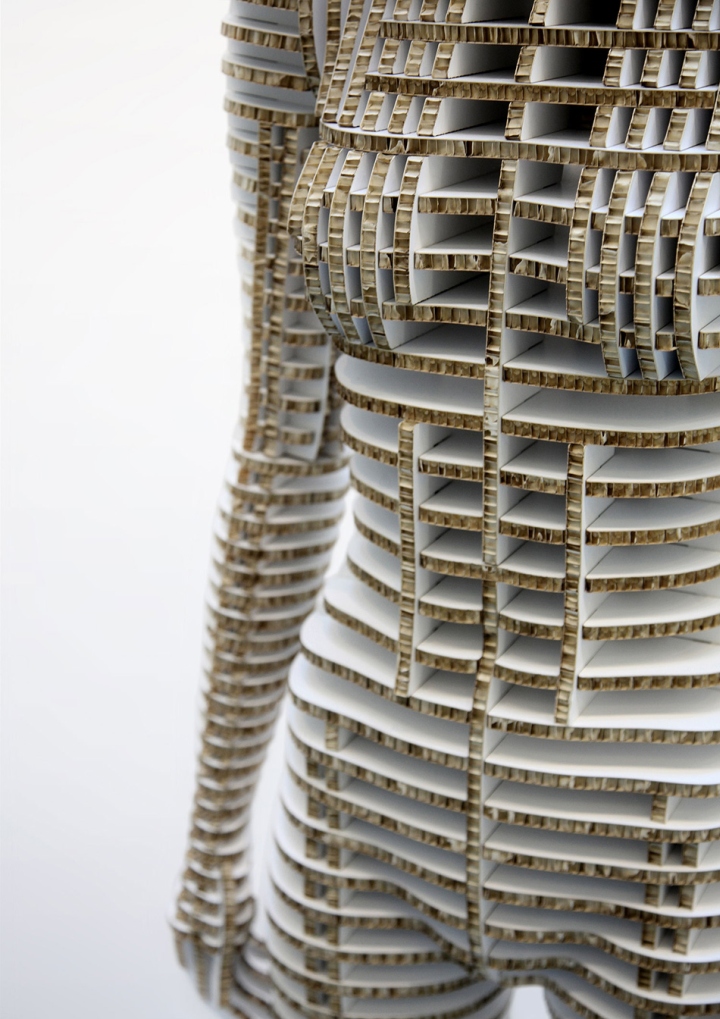




http://www.designboom.com/design/tokujin-yoshioka-issey-miyake-exhibition-03-16-2016/





































